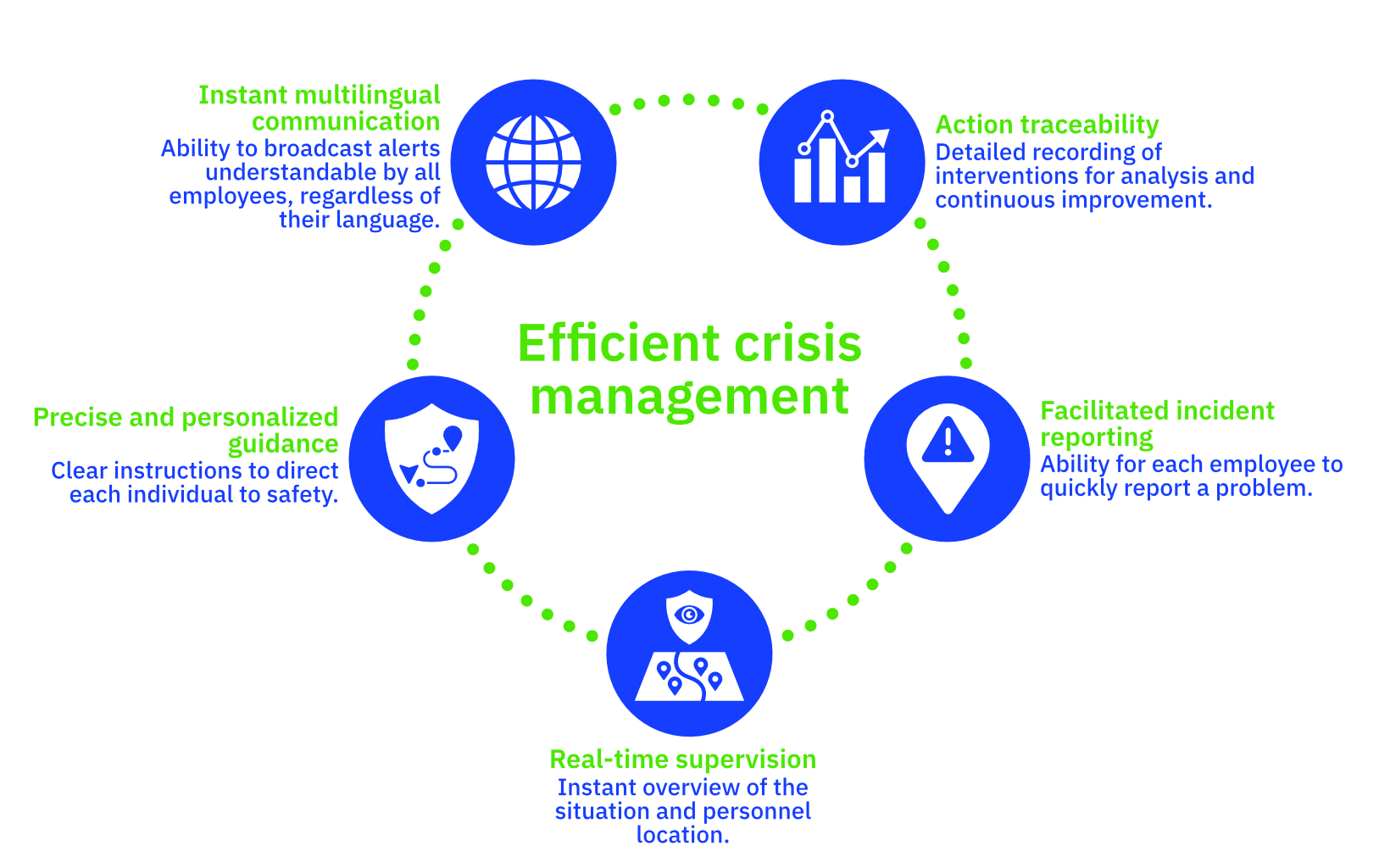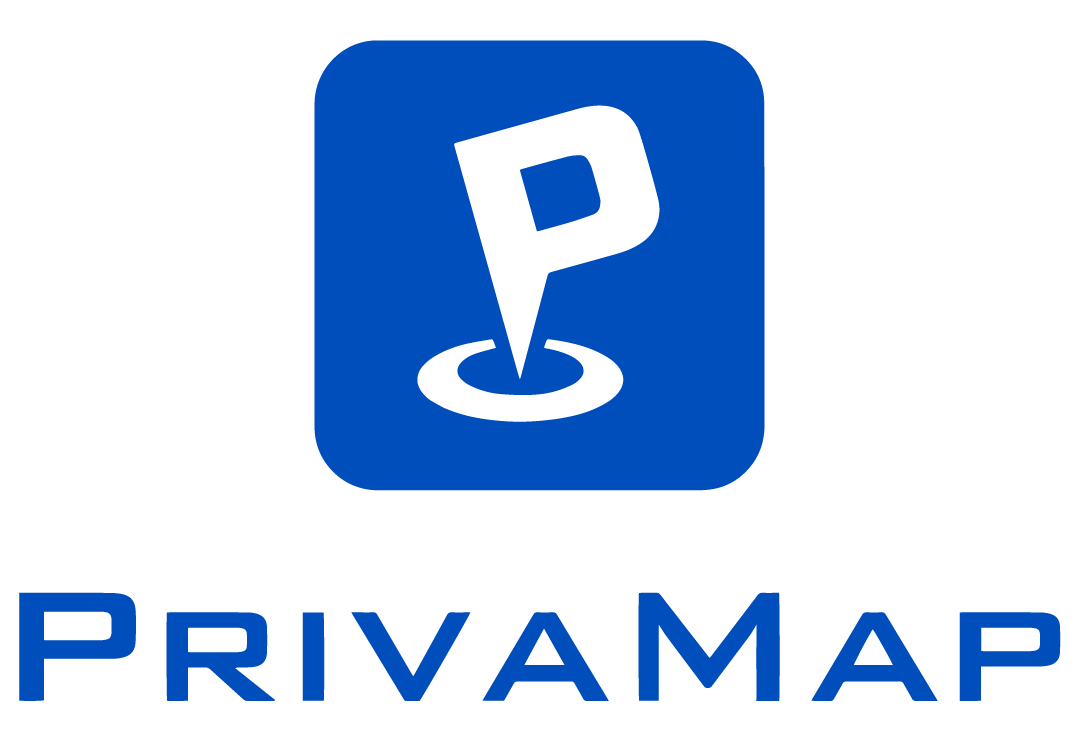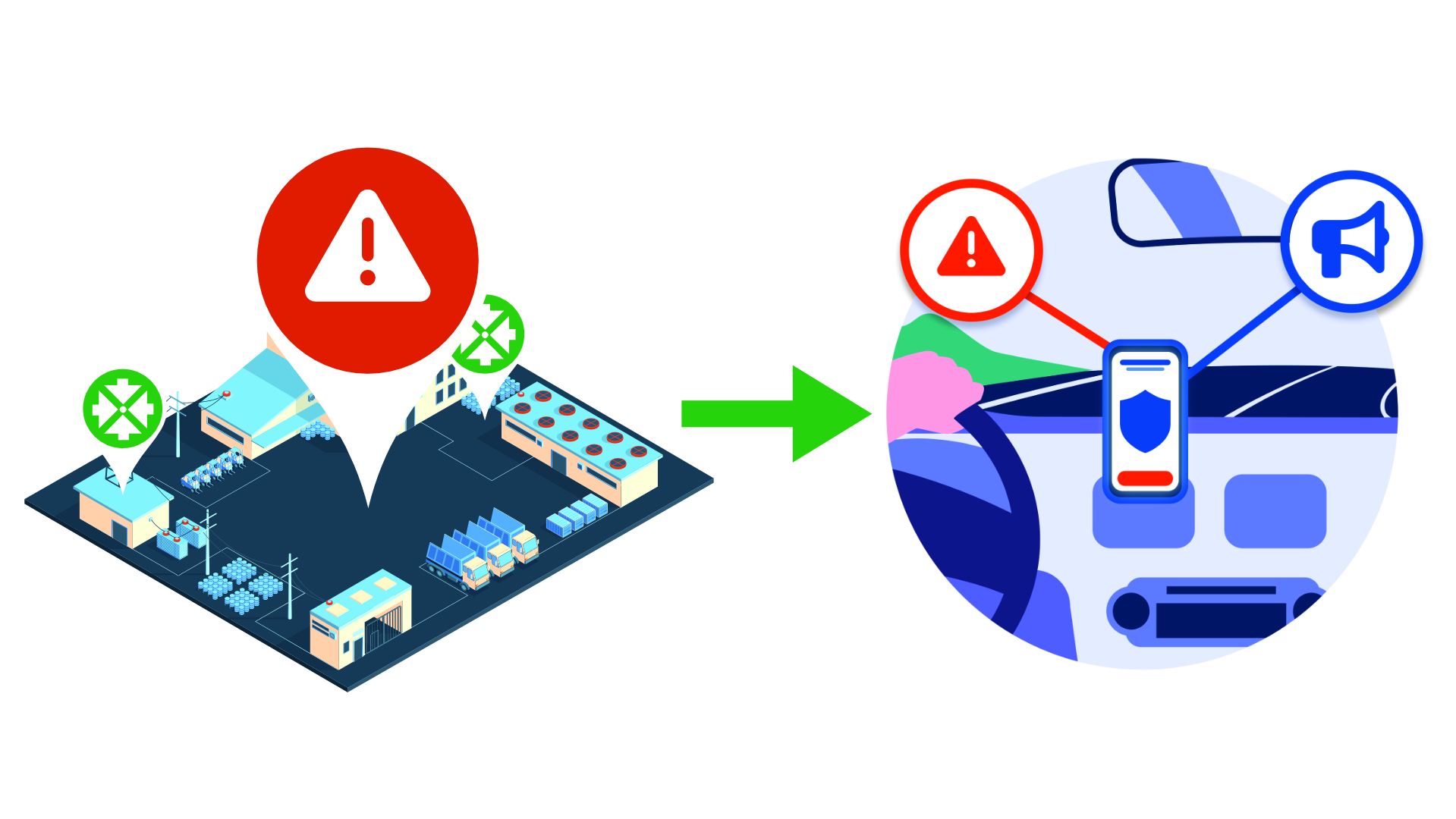As an HSE/QSE professional, you face a crucial challenge: ensuring effective emergency communication in a multilingual environment. Imagine a fire alarm at your industrial site. Your employees, coming from all corners of the world, must evacuate quickly. How do you guarantee that everyone understands and follows safety instructions, regardless of their native language? Effective management of these situations can make the difference between a controlled crisis and a potential disaster.
1. The Risks of Poor Emergency Alert Management
Misunderstanding Leading to Danger
A misunderstood instruction can have dramatic consequences. An employee who doesn’t grasp the urgency of the situation or misinterprets instructions can endanger their life and those of their colleagues. Let’s take the example of a gas leak alert at an industrial site:
A shrill alarm suddenly sounds on the site. A foreign truck driver, unaware of the meaning of this alarm and the best way to protect himself, immediately heads towards the site exit in his truck instead of stopping the engine and walking to the nearest confinement point. This behavior presents serious risks:
- For the driver: direct exposure to toxic gas, risk of poisoning or asphyxiation.
- For the entire site: starting the truck’s engine can create a spark and cause an explosion, endangering all personnel and facilities.
Delays in Evacuation and Safety Measures
Every second counts during an evacuation. Unclear or misunderstood instructions can lead to crucial delays, increasing exposure to risks. For example:
During a fire in a factory, employees waste precious time looking for the nearest assembly point. Some head towards distant or even dangerous areas, unaware of the existence of a safer and closer assembly point. This confusion unnecessarily prolongs evacuation time and increases risks to personnel safety.
Delays in Rescuing People in Danger
An inadequate process for reporting problems to security teams can have serious consequences, especially in a multilingual environment. Consider this scenario:
A foreign worker, speaking neither English nor French, discovers an unconscious colleague at an industrial site. He must quickly alert the security teams but faces several obstacles:
- Language barrier: Unable to communicate effectively on the phone, he struggles to explain the situation and the urgency.
- Imprecise location: Not mastering technical terms or site landmarks, he cannot precisely indicate his position, delaying rescue intervention.
- Increased stress: The difficulty in making himself understood increases his anxiety, potentially leading to judgment errors or omission of crucial information.
These scenarios highlight the crucial importance of a multilingual, intuitive, and precise emergency communication system, capable of ensuring rapid and safe evacuation while avoiding potentially catastrophic inappropriate reactions.
2. Consequences for Companies
Legal Liability and Regulatory Non-Compliance
French legislation imposes clear responsibility on companies regarding safety. Article L4121-1 of the Labor Code obliges the employer to ensure safety and protect workers’ health, especially during emergency situations.
Ineffective communication during a crisis can lead to serious legal and economic consequences for the company, ranging from costly lawsuits to severe regulatory sanctions, potentially leading to temporary or permanent site closures.
Impact on Reputation and Employee Trust
Inadequate crisis management can seriously impact the company’s reputation at several levels:
- Employees: Loss of trust, decreased motivation and engagement
- Partners: Questioning of reliability, risk to partnerships
- Public: Loss of consumer confidence, impact on sales
These reputational damages can durably harm the company’s attractiveness, limiting its ability to attract and retain the talent necessary for its competitiveness and growth.
3. How to Prevent These Risks and Avoid These Disastrous Consequences?
To effectively prevent risks related to crisis management and avoid disastrous consequences, several critical needs must be met:

PrivaMap precisely addresses these critical needs, offering a complete solution for multilingual crisis management:
Key Features of PrivaMap
- 🚨 Instant Multilingual Alerts: With a single click, PrivaMap allows your security teams to send global alerts (fire, gas leak, etc.) as well as associated safety instructions to all on-site workers and operators. Each user instantly receives the alert and instructions in their native language, ensuring universal and immediate understanding of emergency situations.
- 🗺️ Intelligent Guidance: The system provides precise and personalized instructions for each emergency situation. After receiving an alert, the worker or operator is safely geo-guided to the nearest appropriate assembly point, thus optimizing evacuation and significantly reducing the risk of confusion.
- 👀 Real-Time Geolocation and Advanced Supervision: PrivaMap offers precise tracking of each on-site worker’s position, allowing optimal coordination of rescue efforts and rapid adaptation of intervention strategies. On our intuitive supervision platform, your security teams can:
- Instantly visualize the position of all users on site
- Receive immediate alerts in case of unauthorized entry into a dangerous area
- Optimize resource management and real-time decision-making
- 🆘 Multilingual Incident Reporting: Each worker or operator can quickly report any incident they witness or are victim of via a simplified interface on their smartphone. This interface, automatically available in the user’s language, requires no app download. Security teams instantly receive an alert on our supervision platform, including the precise location of the incident, thus allowing a rapid and targeted reaction.
- 📊 Complete Traceability: PrivaMap offers detailed management of incident history:
- Visualization of each incident in table form or on an interactive site map
- Real-time tracking of incident status (to be processed, intervention in progress, resolved) for optimized management
- Access to complete history and average response times of incidents on your site, allowing precise post-incident analysis and continuous improvement of your processes
5. Conclusion: PrivaMap, Your Ally for Effective and Coordinated Crisis Management
In a complex and multilingual industrial environment, PrivaMap transforms crisis management into effective coordination. This innovative solution addresses the challenges of communication and real-time tracking, offering:
- 🛡️ Universal understanding of safety instructions
- 🧭 Optimization of evacuation processes
- 👁️ Real-time supervision for optimal crisis management
- 🔗 Permanent link between security teams and workers
- 📜 Strengthening of regulatory compliance
Discover how PrivaMap can revolutionize your approach to safety. Contact us for a demonstration and take the step towards safety without language barriers.


